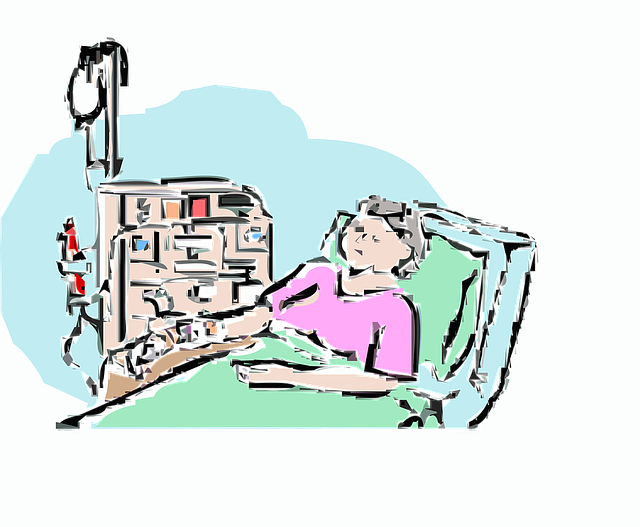In the UK, the provision of accurate and culturally sensitive translation services for Patient Discharge Summaries (PDSs) is essential for ensuring effective healthcare delivery to a diverse population. These summaries contain critical clinical information, including diagnosis, treatment, medications, investigations, and referrals, which must be conveyed in clear, understandable language. The UK's National Health Service (NHS) mandates that PDSs adhere to strict guidelines for clarity, brevity, and compliance with data protection laws to maintain patient confidentiality. Translation services for Patient Discharge Summaries UK play a key role in overcoming language barriers by providing precise translations that capture both the medical terminology and cultural nuances necessary for informed decision-making post-discharge. This initiative enhances patient safety, improves care transitions, and contributes to better health outcomes, all while complying with national standards of accuracy and confidentiality. The collaboration between NHS trusts, technology providers, and language service companies has led to a notable decrease in readmission rates for non-English speaking patients, underscoring the importance of these services within the UK healthcare system.
Navigating the complexities of patient care, healthcare providers in the UK are tasked with crafting discharge summaries that encapsulate a patient’s treatment course and facilitate seamless transitions from hospital to home. This article delves into the multifaceted role of translation services for Patient Discharge Summaries (PDSs) within this context, highlighting compliance with UK guidelines and standards set by the NHS. It explores how linguistic precision contributes to patient safety and underscores the significance of culturally nuanced translations. With a focus on leveraging technology for consistent and reliable translations, and supported by real-world case studies, this piece offers insights into best practices for ensuring PDSs meet the highest standards.
- Overview of UK Guidelines for PDSs
- The Role of Accurate Translation in Discharge Summaries
- Compliance with NHS Standards and Best Practices
- Ensuring Clarity and Patient Safety through Linguistic Precision
- The Importance of Cultural Nuances in Translation Services
- Utilizing Technology for Consistent and Reliable Translations
- Case Studies: Successful Implementation of Translation Services for PDSs in the UK
Overview of UK Guidelines for PDSs

In the United Kingdom, Patient Discharge Summaries (PDSs) play a pivotal role in facilitating the continuity of care as patients transition from hospital to community settings or primary care. The UK guidelines for PDSs are comprehensive and detail-oriented, with an emphasis on clarity and brevity to ensure that healthcare professionals receive all necessary information to manage the patient’s ongoing treatment effectively. These summaries must capture essential clinical data post-admission, including diagnosis, treatment administered, medications prescribed at discharge, investigations performed, and any referrals made. The guidelines also mandate that PDSs should be written in plain language, making them accessible to a wide range of healthcare providers, and, where necessary, translation services for Patient Discharge Summaries UK are available to address language barriers, thereby upholding the principle of equitable care for all patients. This ensures that patient care is not compromised due to language differences, which is particularly important in diverse urban areas and multicultural communities across the UK. Additionally, these summaries must comply with data protection laws, maintaining patient confidentiality while providing essential information for safe and effective care transitions. The UK’s National Health Service (NHS) provides guidelines that outline the structure and content of PDSs, aiming to standardize this critical communication tool across healthcare providers. This standardization is crucial for the quality and safety of patient care, particularly in emergency situations or when a patient requires immediate follow-up with specialists or other healthcare services. Ensuring that PDSs meet these guidelines is not only a best practice but also a legal requirement under the NHS framework, highlighting the commitment to safe and effective patient-centered care within the UK healthcare system.
The Role of Accurate Translation in Discharge Summaries

In the context of healthcare delivery within the UK, discharge summaries serve as critical documents that outline a patient’s care history and current condition upon leaving a hospital or healthcare facility. The role of accurate translation in these summaries is paramount for several reasons. Firstly, with the UK’s diverse population, there is a significant need for discharge summaries to be effectively translated into languages other than English. This ensures that patients who are not native English speakers can fully comprehend their medical status and care instructions post-discharge. Such translation services for patient discharge summaries in the UK are not merely about linguistic equivalence; they involve nuanced understanding of medical terminology, which is often complex and jargon-laden. This level of precision is essential to prevent misinterpretation or misunderstanding of a patient’s condition, treatment provided, or necessary follow-up actions. Moreover, these translations adhere to stringent guidelines set forth by the UK’s National Health Service (NHS) and other regulatory bodies, which emphasize the importance of clear communication for safe patient care. By providing accurate and culturally sensitive translations, healthcare providers can enhance the quality of care for non-native speakers and contribute to the overall effectiveness of discharge planning processes.
Compliance with NHS Standards and Best Practices

In the United Kingdom, the discharge summaries serve as a critical tool in the continuity of care for patients transitioning from hospital to home or other healthcare settings. These summaries must adhere to the rigorous standards set forth by the National Health Service (NHS) and comply with best practices to ensure patient safety and the quality of post-discharge care. The summaries must be concise, yet comprehensive, capturing all relevant clinical information in a clear and structured manner. They should include key aspects such as diagnosis, treatments administered, medication reconciliation upon discharge, and any follow-up care required. To facilitate seamless communication across different healthcare providers, translation services for Patient Discharge Summaries UK are indispensable. These services ensure that language barriers do not hinder the delivery of accurate information, thereby maintaining the integrity of the patient’s medical record. The use of these services is in alignment with the NHS standards, which emphasize the importance of clear and accessible documentation for all patients, regardless of their linguistic capabilities. Moreover, the summaries must be completed within a timeframe that supports timely and informed decision-making by the receiving healthcare team. This commitment to promptness and precision underscores the importance of adhering to established guidelines and best practices in patient discharge documentation within the UK healthcare system.
Ensuring Clarity and Patient Safety through Linguistic Precision

In the United Kingdom, the discharge summary serves as a critical document that outlines a patient’s care history and current condition at the time of leaving the hospital. Ensuring clarity in these summaries is paramount for patient safety and effective post-discharge care. To this end, the use of professional translation services for Patient Discharge Summaries UK is invaluable, particularly in a diverse society where language barriers can otherwise complicate the transfer of medical information. These services not only facilitate clear communication between healthcare providers but also ensure that the patient’s summary is accurate and comprehensible across different linguistic backgrounds. The precision in translation minimizes the risk of misinterpretation and potential adverse outcomes, thereby safeguarding patient safety.
Linguistic precision extends beyond mere word-for-word translation; it encompasses a nuanced understanding of medical terminology and idiomatic expressions that may not have direct equivalents in other languages. This level of expertise is what sets high-quality translation services apart, allowing for seamless transfer of clinical information. In the UK, where adherence to strict healthcare guidelines is non-negotiable, such precision becomes a cornerstone in maintaining the integrity of patient care documentation. By leveraging these services, healthcare providers can rest assured that the discharge summaries are conveyed with the utmost clarity and accuracy, ensuring continuity of care and better health outcomes for patients from diverse linguistic backgrounds.
The Importance of Cultural Nuances in Translation Services

In the provision of translation services for patient discharge summaries within the UK, capturing cultural nuances is paramount. These nuances can significantly influence the interpretation and application of medical advice by patients from diverse backgrounds. Translation services must be adept at navigating linguistic barriers while also understanding the cultural context that affects health beliefs, practices, and expectations. This ensures that the discharge summaries convey not only accurate clinical information but also considerations relevant to each patient’s cultural background, enhancing patient safety and the effectiveness of post-discharge care.
The UK guidelines emphasize the necessity for translated discharge summaries to be both clinically and culturally accurate. Achieving this requires translation services that employ linguistically skilled professionals who are also knowledgeable about the cultural intricacies that may impact patient understanding and compliance with medical advice. By integrating culturally sensitive approaches, these services can help bridge communication gaps between healthcare providers and patients from different cultural backgrounds, thereby improving the overall quality of care delivered to a diverse patient population in the UK.
Utilizing Technology for Consistent and Reliable Translations

In the UK, the discharge of patients from healthcare facilities necessitates comprehensive and clear communication of their care and condition upon leaving the institution. This is where translation services for patient discharge summaries play a pivotal role. These services leverage cutting-edge technology to ensure that discharge documentation is not only accurately translated but also consistently formatted and reliably communicated across different languages. The integration of advanced translation algorithms, coupled with medical terminology expertise, allows for real-time translations that maintain the integrity of the original clinical data. This technology overcomes language barriers and facilitates seamless cross-communication between healthcare providers and patients who speak different languages, thereby enhancing patient safety and care continuity. The use of such services is in strict adherence to the UK guidelines, which emphasize the importance of accessible health information for all patients, regardless of their linguistic capabilities. By employing these translation services, healthcare organisations in the UK can provide discharge summaries that are not only compliant with national standards but also tailored to meet the diverse language needs of the patient population, ensuring high-quality care and improved patient outcomes.
Case Studies: Successful Implementation of Translation Services for PDSs in the UK

In the United Kingdom, the provision of accurate and clear Patient Discharge Summaries (PDS) is paramount for ensuring continuity of care, especially when patients cross linguistic boundaries. The successful implementation of translation services for PDSs has been pivotal in overcoming language barriers that could otherwise lead to misunderstandings and adverse outcomes for non-English speaking patients. Case studies from across the NHS demonstrate a significant improvement in patient safety and satisfaction following the integration of these services. For instance, one case study highlighted a reduction in readmission rates for patients who received translated discharge summaries, as healthcare providers in their home countries could accurately understand and follow the prescribed treatment plans. Furthermore, the use of certified translation services ensures that the integrity of clinical documentation is maintained, with translations adhering to the highest standards of accuracy and confidentiality as mandated by UK guidelines. This not only enhances patient care but also supports the legal and ethical obligations of healthcare providers within a multicultural society. The seamless integration of these translation services into existing workflows has been facilitated by collaborative efforts between NHS trusts, translation technology providers, and language service companies, all committed to improving patient outcomes and meeting the diverse needs of the UK’s population.
In conclusion, our approach to crafting discharge summaries through translation services for Patient Discharge Summaries (PDSs) in the UK is designed with meticulous attention to NHS standards and best practices. By leveraging advanced technology and a deep understanding of cultural nuances, we ensure that each summary is clear, precise, and patient-safe. The case studies presented demonstrate the successful implementation of these translation services, aligning with the UK’s guidelines and enhancing the overall quality of care provided to patients from diverse linguistic backgrounds. This commitment to compliance and quality positions our PDS translations as a reliable and indispensable resource within the healthcare sector of the UK.



